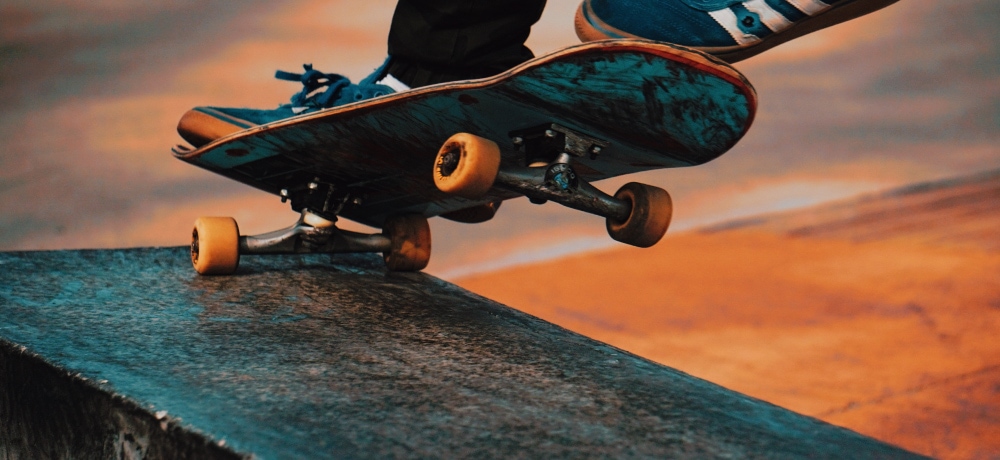Choosing a skateboard that is the right size for you can be challenging, especially if you are just starting out. You are in luck if you are a novice skater or if you want to purchase a new board but don’t want to take the chance of wasting funds on a skateboard that’s the incorrect size.
While buying one, you should inquire about the types, prices, and components of skateboards present in the market. To learn all about different types and sizes of skateboard, stay connected.
What Type of Skateboard is Best for Beginners?
The ideal skateboards for novices are the regular and cruiser models.
In addition to cruising and street skating, a regular skateboard can also be used for tricks. The standard size for a skateboard for beginners is 31 to 33 inches long and 7.5 to 8.5 inches in width.
Unlike a trick skateboard, a cruiser skateboard is built more for casual use and getting around the town. It’s more forgiving on difficult terrain than a regular skateboard because of its larger and softer wheels.
The standard cruiser skateboard is between 27 and 32 inches long and 7 and 8.5 inches broad, making it an ideal size for novices looking for a steady and comfortable ride.
Ultimately, it’s up to the rider to decide whether he or she would be better off with a regular skateboard or a cruiser skateboard. As a beginner, you should focus on finding a skateboard that is both stable and easy to learn.
Types Of Skateboard
There are more options when it comes to standard skateboards than there are with longboards, so it’s crucial to find one that suits your riding style. There are eight different kinds of skateboards.
Mini Skateboards
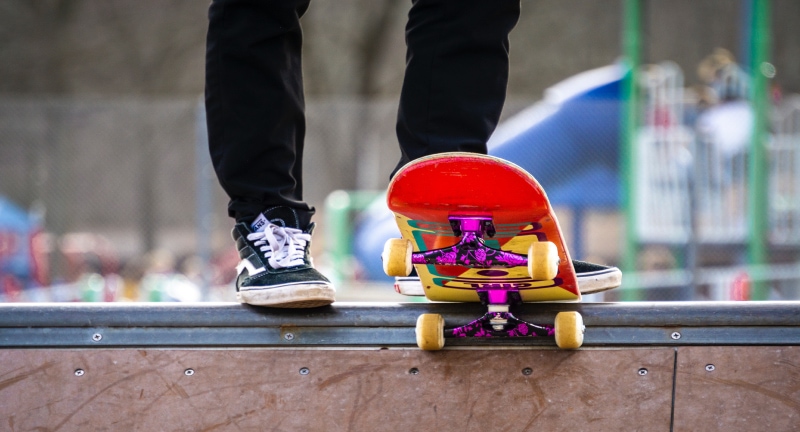
Mini skateboards are the tiniest boards available, and they’re perfect for kids just learning to skate. Young riders typically use these skateboards. The price of a mini skateboard can vary depending on the brand and the quality of the components, but generally, a good quality mini skateboard can cost between $50 to $100. You can do various tricks, including ollies, kickflips, heelflips, and other basic flip tricks.
Cruiser Skateboards
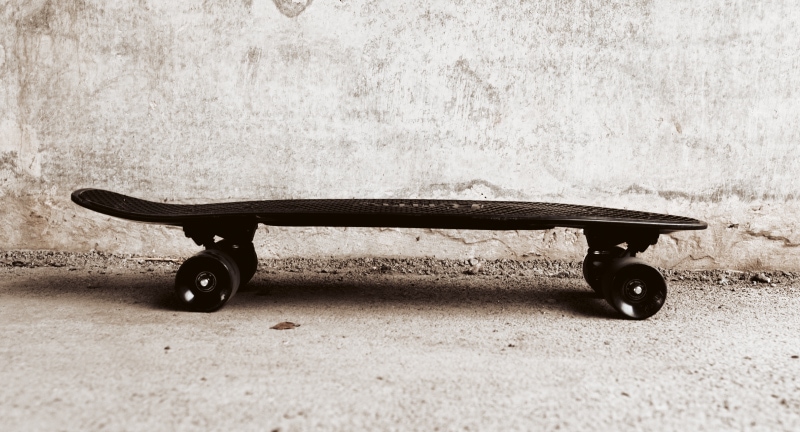
A cruiser skateboard is a great choice if you want to use your skateboard for everyday commuting. The decks on these boards are thicker, and the wheels are bigger and softer than those on standard skateboards, making them ideal for higher speeds and rougher surfaces. It is typically used by riders who want a comfortable and easy board for commuting, transportation, and cruising around town.
The price of a cruiser skateboard can vary depending on the brand and the quality of the components, but generally, a good quality cruiser skateboard can cost between $80 and $200.They can be used for basic maneuvers like carving and pumping, which involve generating speed and momentum by shifting your weight on the board.
Old-school Skateboards
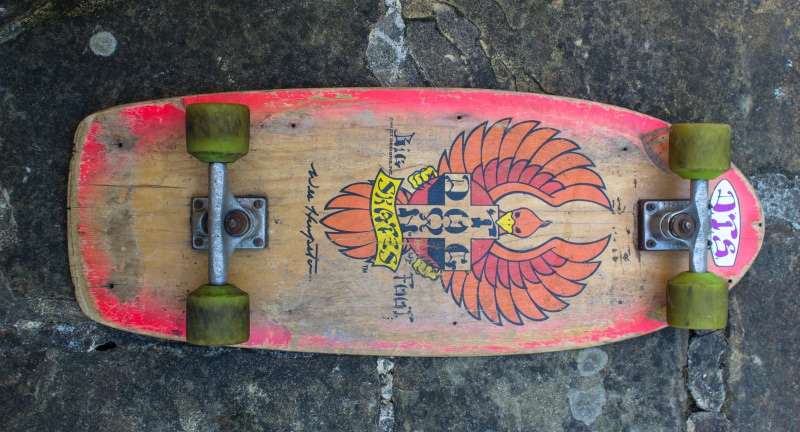
Traditional skateboards resemble surfboards in that they have a flat tail and a pointed nose. They are popular among older skaters who grew up during the 70s and 80s and newer skaters who appreciate these boards’ unique aesthetic and feel. The price of old-school skateboards can vary widely depending on the condition, rarity, and brand.
You might find a used or lower-quality board for around $50-$100 on the lower end. On the higher end, you could easily spend several hundred dollars or more for a vintage or collector’s item. Some tricks you can do on this include powerslide, boneless, coffin, acid drop, and no comply.
Steep Kick Skateboards
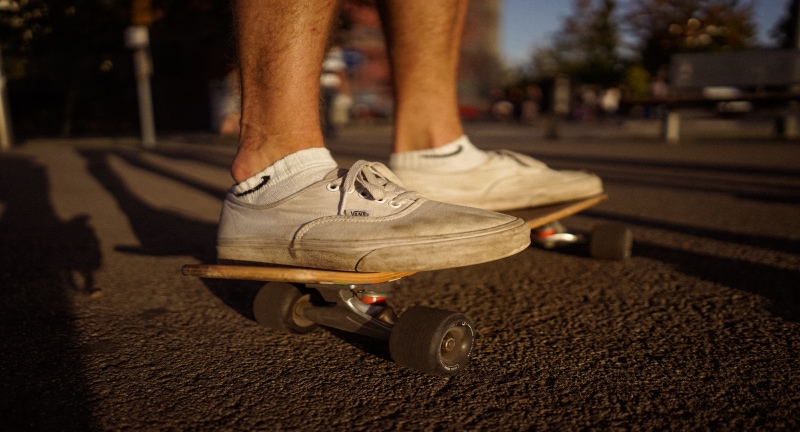
Steep kick skateboards are designed for more advanced tricks requiring a higher and steeper end. Users range from novices to seasoned pros on the skateboard. Depending on the model and retailer, the price of a Steep Kick Skateboard may vary. You can find them for as little as $50 and as much as $150 or more.
With a Steep Kick Skateboard, your options for tricks are practically limitless. Among the most common skateboarding moves are ollies, kickflips, heelflips, 50-50 grinds, and many others.
Street Skateboards
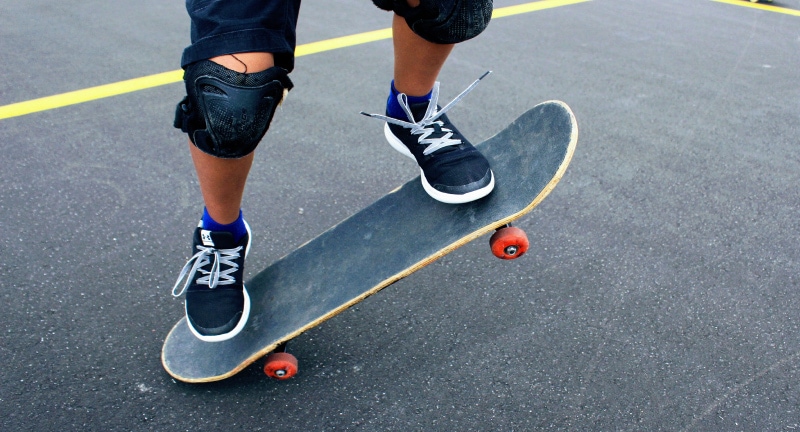
Skaters of varying experience levels utilize street skateboards to cruise the streets and do tricks on manmade features found in metropolitan environments, such as stairs, rails, and ledges. Street skateboard prices change from store to store and brand to brand based on demand and supply. Street skateboards often cost between $50 and $200 or more.
With a street skateboard, your options for tricks are practically limitless. Ollies, kickflips, heelflips, 50-50 grinds, boardslides, and more are all common techniques. Street skateboards’ adaptability means they may be utilized to do tricks in a wide range of urban settings.
Nickle or Penny Skateboards
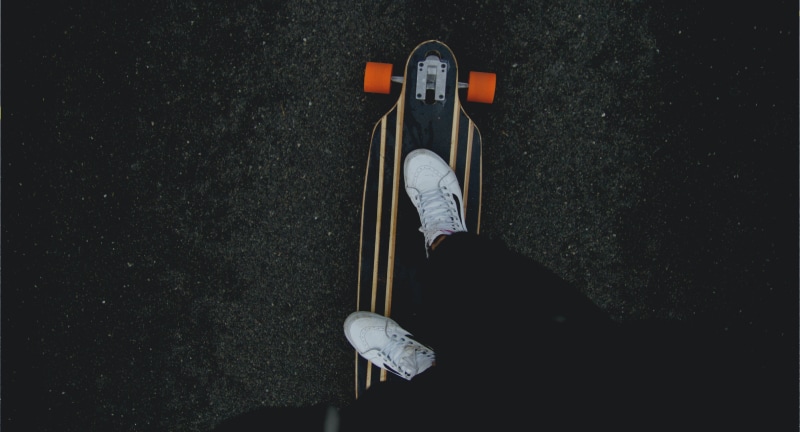
These plastic surfboards are portable, lightweight alternatives to regular shortboards. Most skateboards look like traditional longboards, though street and tiny cruiser varieties exist. Due to their small stature and portability, occasional riders and commuters often favor them.
You may also use them for cruising and carving around the city. Pennyboards and nickel skateboards can be purchased for as little as $50 and as much as $150 or more. Because of their tiny size and lack of concave shape, Penny and Nickle’s skateboards are unsuitable for doing technical street tricks.
Mini cruiser Skateboards
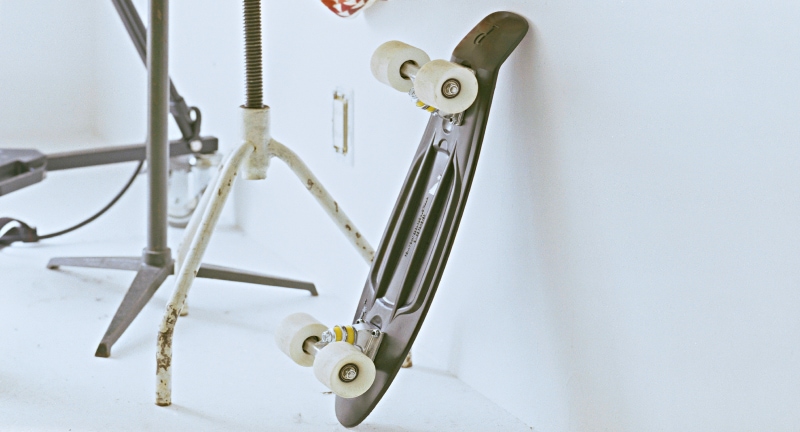
It combines the cruiser and mini, featuring smaller, narrower decks and larger, softer wheels. They’re great for kids learning to ride, as the larger wheels offer stability, and the frame is manageable for novices. They are well-liked by commuting skateboarders and casual skateboarders because of their compact size and wide range of uses. You may also use them for cruising and carving around the city.
Mini cruiser skateboard costs may differ by manufacturer, model, and retail outlet. Mini cruiser skateboards can be purchased for as little as $50 and as much as $150. Mini cruiser skateboards are not ideal for doing technical street tricks due to their small size and lack of concave shape. Yet, you can still pull off some easy tricks like ollies, kick turns, and manuals using one of these boards.
Double Kick Skateboards
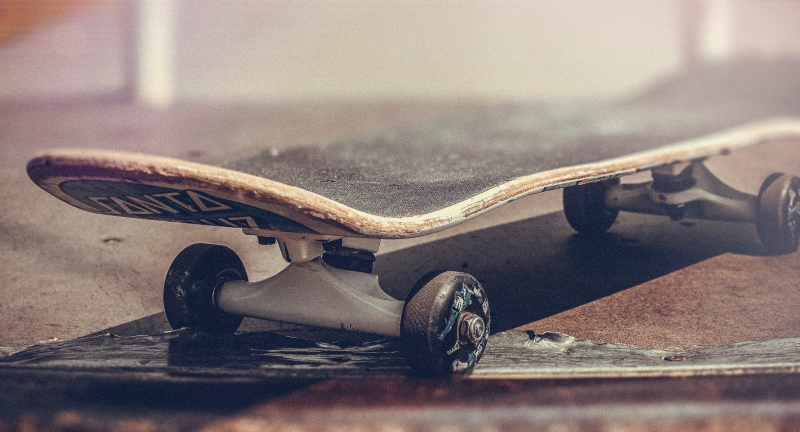
It is similar to a street board in that it has a popsicle shape, but its nose and tail are raised to facilitate ollies and other tricks. Skaters who want to do intricate maneuvers on the nose and tail of their boards will appreciate the versatility of a double-kick skateboard. Depending on the brand, quality, and retailer, the cost of a double kick skateboard can range widely. Skateboards with two kick wheels often cost $50 to $200 or more.
The possibilities for tricks on a double-kick skateboard are practically limitless. A few examples of well-known skateboarding moves are ollies, kickflips, heelflips, 50-50 grinds, boardslides, and more. Skateboarders favor the double kick on the nose and tail because it allows for various technical feats.
What is the Most Popular Type of Skateboard?
Skateboard popularity fluctuates over time and from place to place, but the popsicle or double-kick skateboard is the most sought-after model. Skateboards of this design are symmetrical in shape, with rounded noses and tails that make it possible to perform tricks from either end.
Popsicle skateboards are adaptable and may be used for various skating scenarios, from street skating to skatepark cruising. They come in various sizes and designs, making them appealing to skateboarders of varying expertise. But longboards and cruiser boards, two additional forms of skateboards, also have their own devoted fan base and are popular for certain kinds of skating.
Skateboarding is much more manageable if you get a board that fits you properly. Your preferred deck size will become clear as you gain experience, but until then, we suggest basing your selection on your shoe size. You’ll have a solid foundation to build from with this. To help you pick the best skateboard, here are some things to think about:
- The perfect skateboard for you will depend heavily on your intended riding style, so think about that. Several types of skateboards are needed for the many skateboarding disciplines, such as street skating, vert skating, cruising, and longboarding.
- Skateboard deck sizes vary, and it’s important to get the right one for you. The deck’s dimensions are adjustable to accommodate riders of varying heights and shoe widths. Narrower decks are more responsive and easy to turn, while wider ones provide more stability and space for your feet.
- Think about the deck’s form: Traditional, Popsicle, and Old-School forms are only some of the skateboard deck forms available to you. Old school decks have a wider, flatter nose and tail with a distinct concave shape, while popsicle decks are symmetrical and more rounded.
- Check out the trucks: The trucks of a skateboard are the metal pieces that hold the wheels in place on the deck. Trucks and deck widths should be compatible. If your deck is 8 inches wide, you should get trucks also 8 inches wide.
- Skateboard wheels come in a wide range of sizes and durometers, so it’s important to pick the right ones for you. The wheels should be chosen with the intended use in mind; larger wheels are better for cruising, while smaller wheels are better for technical street skating. According to the durometer scale, wheels with higher numbers are more suitable for smooth surfaces, while wheels with lower numbers are more suitable for rough ones.
- Skateboard bearings are what keep the wheels from skidding on the deck. Professional skateboarders should invest in high-quality bearings since they spin quicker and last longer.
- Examine the sandpaper-like skateboard grip tape that lines the top of the deck. It’s grippy and keeps your feet planted on the board. Grip tape wears down with time and needs to be replaced often.
- Finally, think about your budget while making your skateboard purchase. Depending on the brand and components, a high-quality skateboard can cost anywhere from $50 to $200 or more. Remember that the money spent on a high-quality skateboard will be worth it in the long run.
Following these guidelines, you may get the perfect skateboard for your needs and preferences. Take your time, read up on the topic, and ask some seasoned skateboarders for their input if you’re still confused.
Skateboard Deck Size Chart
Finding the optimal deck size could take some time. There is no universally correct answer; you should consider factors such as the sort of skating you plan to do, the size of your skate shoes, your height, and your weight. If your dimensions are handy, you can use the chart below as a useful guide.
| Deck Size (inches) | Age | Height | US Shoe Size (men) | US Shoe Size (women) |
| 7 – 7.375 | Under 6 | 3’5″ or less | 3-3.5 | 4.5-5.0 |
| 7.375 – 8.0 | 6 to 12 | 3’5″ to 5’2″ | 4–6 | 5.5–7.5 |
| 8.0 – 8.25 | 13 and older | 5’3″ and over | 6.5–9 | 8–10.5 |
| 8.0+ | Adults | 5’3″ and over | 9.5 and over | 11 and over |
Conclusion
Finally, it’s important to note that skateboarding is a thrilling and exciting activity that has won the hearts of millions worldwide. There is a wide selection of skateboards out there, so riders may find one that is right for them. There’s a skateboard out there for everyone, whether you want to cruise around town, get to and from work, or show off your abilities at the local skate park.
So, grab your skateboard and head out to the streets, parks, or hills to experience the liberation and excitement of cruising around on two wheels. Have a great day skating!
